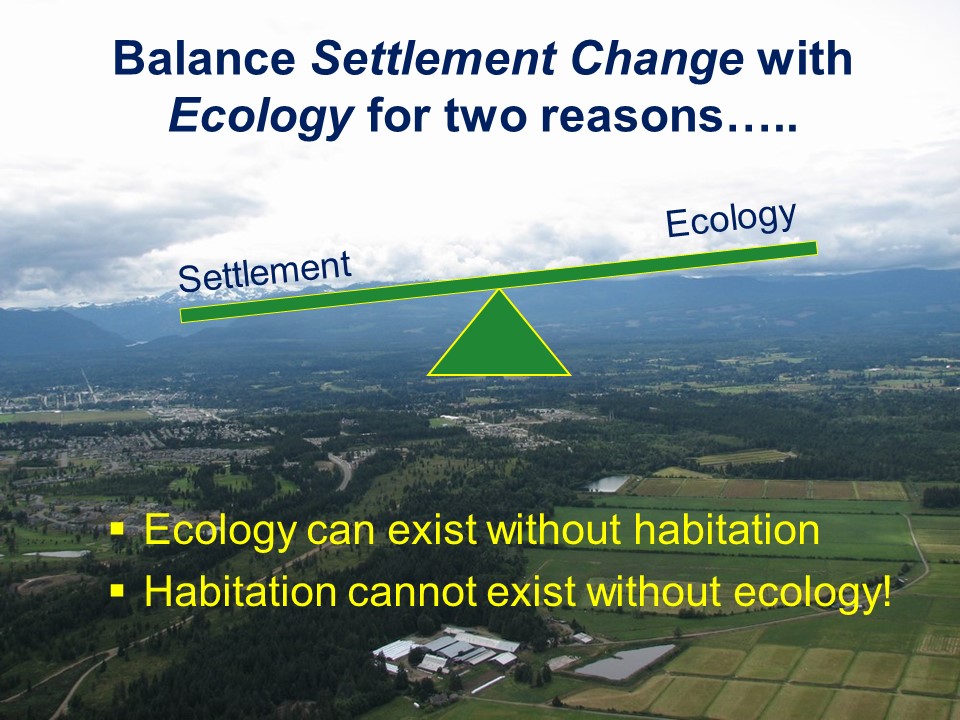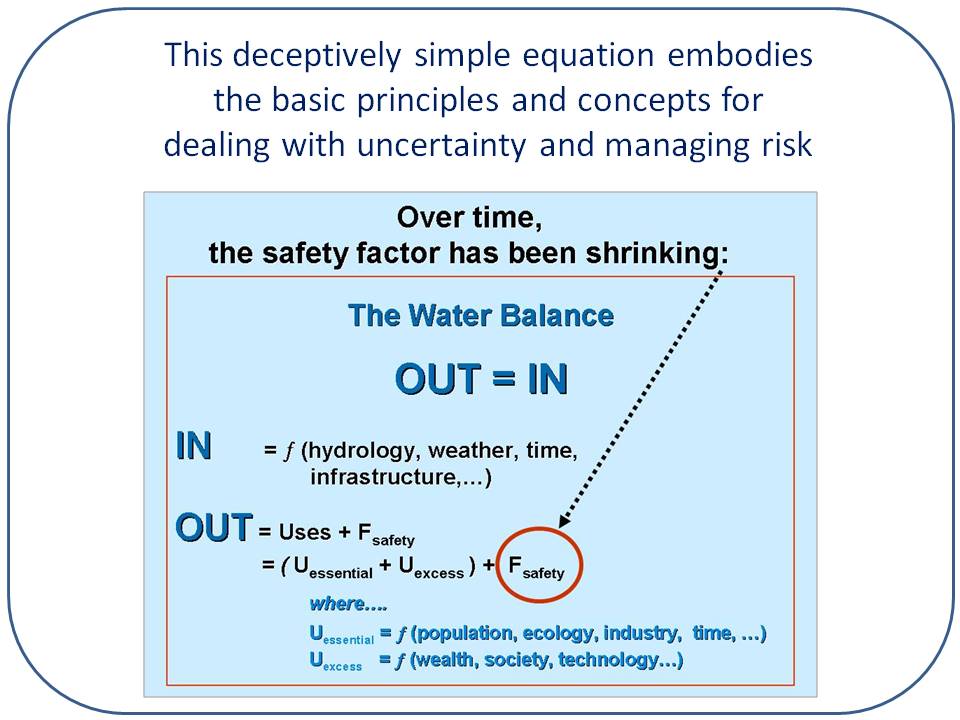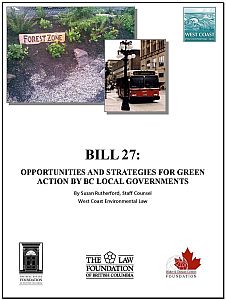GETTING AHEAD OF THE WAVE: Seminar #3 in 2009 Comox Valley Learning Lunch Series had a dual focus— the Comox Valley Regional Water Strategy; and enabling tools provided by Bill 27, the Green Communities legislation
Note to Readers:
This article previews what to expect at the third seminar in the 2009 Comox Valley Learning Lunch Series. The focus is on the two main agenda items, namely: the Comox Valley Regional Water Strategy; and Bill 27, the Green Communities legislation. Susan Rutherford of West Coast Environmental Law is the featured faculty member for the Bill 27 discussion.
To preview the day, click on Getting Ahead of the Wave: Final Agenda for Seminar on “Commitment to Regional Team Approach” . The Comox Valley Regional Growth Strategy provides the backdrop for the 2009 Series curriculum. Looking ahead to 2010, the graphic below provides a simplified mind-map that is intended to help conceptualize the desired outcome resulting from the 2009 program.

Seminar #3 Overview
Hosted by the Comox Valley Regional District, the third in the set of three seminars that comprise the 2009 Comox Valley Learning Lunch Series will build on what “the 4Cs” mean in practice, namely: communicate, collaborate, cooperate and coordinate.
 “The spotlight will be on the concept that has emerged for a Planning and Engineering Collaboration Protocol to guide an integrated Technical Advisory Committee, known by the acronym TAC,” reports Kim Stephens, Program Coordinator for the Water Sustainability Action Plan for British Columbia, and moderator for the 2009 Series.
“The spotlight will be on the concept that has emerged for a Planning and Engineering Collaboration Protocol to guide an integrated Technical Advisory Committee, known by the acronym TAC,” reports Kim Stephens, Program Coordinator for the Water Sustainability Action Plan for British Columbia, and moderator for the 2009 Series.
“A key message is that water sustainability will be achieved by implementing green infrastructure policies and practices.”
Seminar Design
According to Kim Stephens, there are five parts to the seminar, with a cascading flow that will result in a tangible outcome and specific follow-on actions by the Comox Valley Regional Team:
- a keynote address by Tim Pringle;
- an hour on the Comox Valley Regional Water Strategy;
- an hour on the application of Bill 27, featuring Susan Rutherford of West Coast Environmental Law (and representing the Green Infrastructure Partnership);
- an hour for a Town Hall Sharing Session; and
- a roundtable recap and look ahead to 2010.
“A desired outcome is that participants will commit to a regional team approach which results in implementation of An Integrated Watershed Approach to Settlement. We will also be emphasizing that Living Water Smart targets for stream health protection and water use efficiency establish expectations for aligning provincial and regional goals with local actions.”

Connect to the Landscape
Tim Pringle of the Real Estate Foundation of British Columbia will deliver a keynote address to introduce the ‘big idea’ that will set a tone for the seminar. “At Seminar #1, two big ideas were introduced: call to courage and one market. At Seminar #2, it was mission possible. On November 26th, I will be introducing the mantra connect to the landscape,” foreshadowsTim Pringle.
 “My key message will be: the geography of the landscape should drive how the regional team functions. This will provide context for the discussion that will follow regarding the Comox Valley Regional Water Strategy.”
“My key message will be: the geography of the landscape should drive how the regional team functions. This will provide context for the discussion that will follow regarding the Comox Valley Regional Water Strategy.”
“Tim Pringle will distil what was gleaned from the ‘Ah-Ha’ moments as reported by participants at Seminar #2,” states Kim Stephens. “He will also revisit the research on ‘what drives settlement’ on Vancouver Island; and he will provide his perspective on what communities are up against in viewing the context differently…so that they can in fact balance settlement change and ecology.”

Comox Valley Regional Water Strategy
When the Comox Valley Regional District (CVRD) was established in February 2008, the provincial government mandated that the CVRD develop a Comox Valley Regional Growth Strategy and a Comox Valley Regional Water Supply Strategy.
“The hour before lunch is the opportunity for the CVRD team to tell their story,” notes Kim Stephens. “We anticipate that forthright sharing will inform and educate the other players in the room; and will create an atmosphere that is conducive to alignment of efforts.”
“This segment is also the opportunity for the CVRD team to connect the dots to insights gained from the experience of the Regional District of Nanaimo and Metro Vancouver as shared at Seminar #2. Both those regions are taking an holistic approach to Water OUT = Water IN.”
“Because the geography of the landscape is the focus that draws in practitioners, residents, developers and elected representatives…it lends itself to being the frame of reference for all regional strategies, including growth, sustainability and water,” adds Tim Pringle.
Understanding the Water Challenge
To read about watershed protection, population-support capacity, infrastructure upgrading and implementation issues in the Comox Valley, click on A Regional Perspective on Water Supply in the Comox Valley to download an 8-page document in PDF format.
This document is complemented by a number of stories posted on Water Bucket; these elaborate on specific aspects of the “regional water storyline”.

Shared Responsibility: Application of Bill 27 to Achieve Water OUT = Water IN
The Province’s Living Water Smart and Green Communities Initiative are an integrated package; and provide a provide a policy framework for aligning efforts at three scales – provincial, regional and local – to achieve desired outcomes for community design.
“Living Water Smart represents the vision, and the Green Communities Initiative provides enabling tools to achieve the vision,” states Kim Stephens. “Bill 27, enacted in 2008, has provided local government with the ability to make Water OUT = Water IN tangible. This holistic way of thinking about water touches on all aspects of land development.”
Context for Green Action
In May 2008, the “Green Communities” legislation known as Bill 27 amended the Local Government Act and Community Charter. In June 2009, West Coast Environmental Law released a discussion paper titled Bill 27: Opportunities and Strategies for Green Action by BC Local Governments.
 Written by West Coast Staff Counsel, Susan Rutherford, the paper is intended to contribute to the discussion on how local governments may build more sustainable communities, and specifically, is designed to provide “…analysis and practical guidance regarding how local governments may use the legal tools available to advance green initiatives.”
Written by West Coast Staff Counsel, Susan Rutherford, the paper is intended to contribute to the discussion on how local governments may build more sustainable communities, and specifically, is designed to provide “…analysis and practical guidance regarding how local governments may use the legal tools available to advance green initiatives.”
“The focus is Bill 27, new powers extended under it, and how that power may be used to strengthen sustainability efforts,” states Susan Rutherford.
Responsibility Matrix
 “Susan Rutherford will be the guest faculty at Seminar #3, and will lead the Bill 27 discussion after lunch,” reports Kim Stephens. “Susan will describe the application of a Shared Responsibility Matrix as an organizing framework; and she will explain how Bill 27 creates statutory authority for water sustainability action.”
“Susan Rutherford will be the guest faculty at Seminar #3, and will lead the Bill 27 discussion after lunch,” reports Kim Stephens. “Susan will describe the application of a Shared Responsibility Matrix as an organizing framework; and she will explain how Bill 27 creates statutory authority for water sustainability action.”
“This will inform the discussion of how to create Water Conservation Development Permit Areas that ensure a consistent regional approach to water conservation and rainwater management. In this regard, Susan will connect the dots to the legal, policy and technical primers developed by the Green Infrastructure Partnership for achieving an absorbent landscape.”
Susan Rutherford introduced the Shared Responsibility Matrix at the Metro Vancouver Water Balance Model Forum, hosted by the City of Surrey in March 2009. The matrix evolved from the contribution made by Susan Rutherford to the 2008 Comox Valley Learning Lunch Series.
To Learn More:
For background on the basis for the Responsibility Matrix, click on Making Green Choices: Opportunities for Law and Policy to Effect Change on the Ground.


